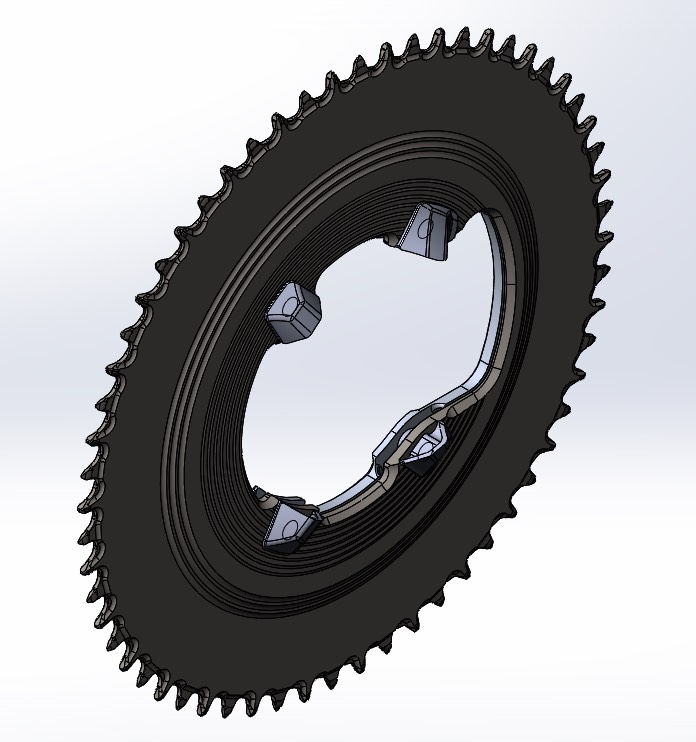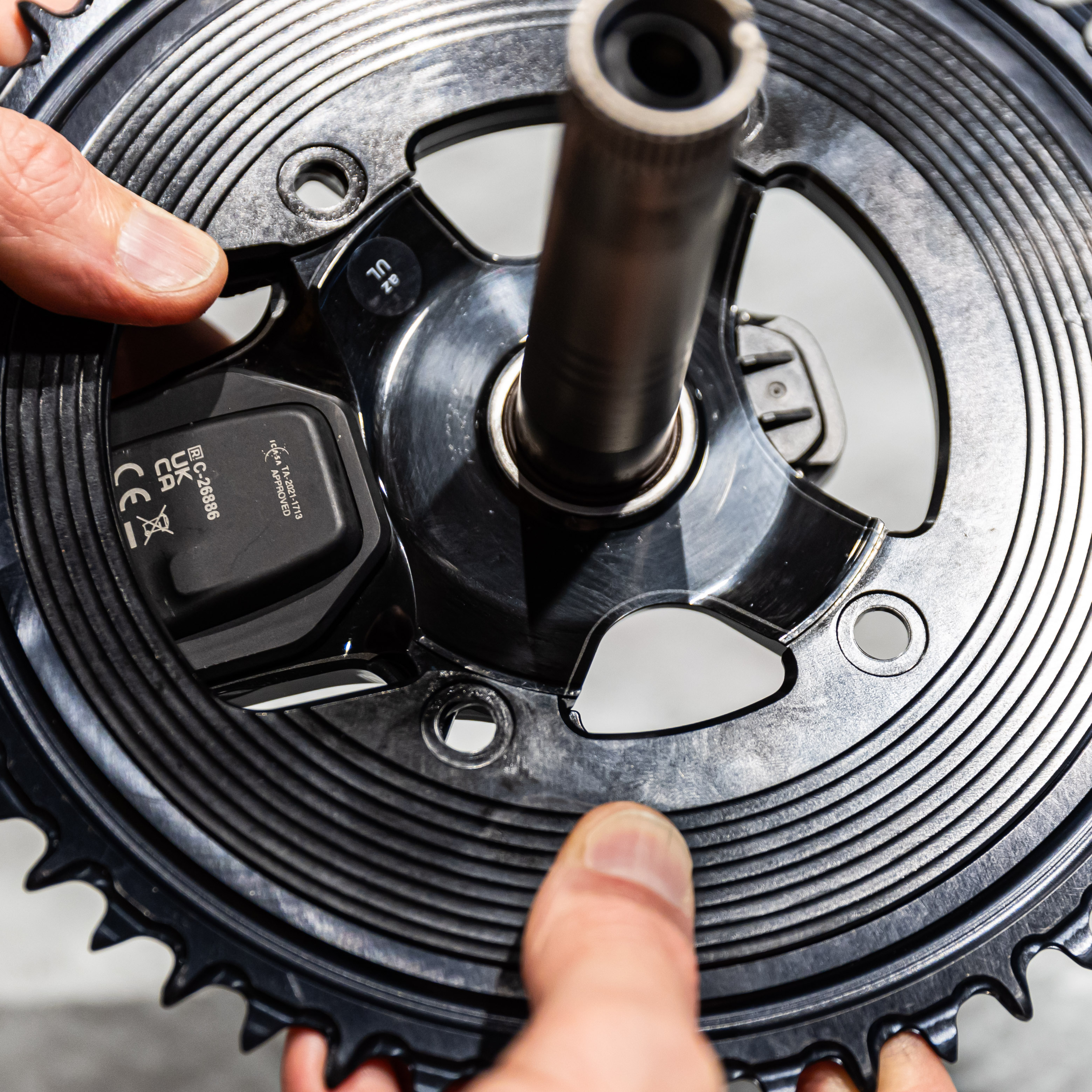The Importance of Chain Line: Driveline Ecosystem
14th Jun 2024
Chain line efficiency is one of those buzz-phrases that is going around the cycling world at the minute. With modern road bikes having twelve cogs on the rear wheel, we don’t accept anything other than the ability to use all twelve. That sounds simple, but it’s not.
The goal is also to have as straight a chain as possible. Minimise cross-chaining and maximise efficiency. To do this, can require some clever technology.
Introducing, our Driveline Ecosystem…
What is Cross Chaining?
Cross-chaining is when the angle of the chain approaching the chainring is so extreme that it creates a mechanical problem. The problem is in the form of chain plates gouging teeth and the bending load applied directly to the chain plates, pins and rollers.
Palpable in the feeling and sound of the plates of the chain contacting the teeth of the chainring, we’ve all been there and cross-chaining. It’s physically destructive to the chain and chainring - mechanically inefficient too.
Cross-chaining is the downside of most 1X systems. Some companies have worked around this by drastically “slimming down” their chainring teeth, to what more closely resembles a 2X chainring tooth profile. Others have simply not addressed this, which reduces the number of usable gears to maybe 10.
Our approach? Straight away we knew that part of the solution was in the offset of the chainring and adjusting the chainline inboard.
Our very first prototypes used the combination of a Rotor crank and a power2max track spider to achieve this and we were able to demonstrate that this was a very effective strategy for maximising usage of all 12 gears. However, there are not many people willing to go down the path of using a track spider on their TT bike, and with good reason.

In 2023 we were introduced to cSixx, a South African based company, active in the MTB / Gravel space, making some exceptional after-market accessories. cSixx combines their engineering know-how, design competencies and manufacturing capabilities, to produce class-leading products that push the limits of performance and maximise functionality. One thing that caught our eye was their 1X tooth profile, arguably the most refined to date and to the astute observer, they had solved our second problem.
“A mutual acquaintance linked us up and upon seeing what Sync was doing with their 3D printed Tri-bars we were immediately intrigued. We’re always open to working with experts in the field and love bouncing ideas and knowledge and the Sync Team are the perfect partners for this.” - CSixx Components
1X Limitations - Tooth Profile
The moment the plates of the chain gouge a tooth, it’s game over and the chainring will never be the same again. While chain line party solves the problem, the complete resolution comes with a heavy sculptured tooth profile, requiring considered design, advanced CNC capabilities and a material that can be handled in this manner (not carbon fibre). Simply put, CSixx has this process refined to a very high level and we are yet to see a 1X chainring that exceeds their product.
What do CSixx say?
All our design, engineering and processes are in-house so this helps us be super creative. Our unique tooth pattern that is cross compatible between Shimano as well as SRAM chains has been a long road with countless versions having been designed and machined inhouse. This profile has been optimised for longevity as well as chain retention, something that is incredibly important on Mountain bikes.
1X Limitations - Material Choice
As alluded to above, the ultimate 1X chainring requires CNC machining, to achieve the profile, precision and longevity of the all-important tooth. Sync x CSixx chainrings are made from aerospace grade 7075 T6 aluminium plate, finished in-house with a hard anodised treatment process, to ensure longevity. There is simply no better material and no better method for making this product.
1X Limitations - Unique Design

One thing that has always left us a little disappointed is the finish of the 1X assembly was the lack of consideration for the rear of the crank / chainring. In most cases, you are left with an exposed spider and exposed chainring bolts, which seem a little unfinished. During the first round of prototypes with CSixx we proposed the solution of a “backing plate” and their solution hit the mark.
The Chainring Backing Plate takes the place of the small chainring, covering the spider and the rear of the chainring, producing a more aesthetically pleasing and “sealed off” region at the back of the crank.
Why TTing and Triathlon?
For us at Sync, the world of ITT and triathlon is one we’ve been in for a while. For CSixx, it’s something new. The South African brand mainly plays in the MTB and Gravel world, so why the shift now?
"It has been a natural evolution for us. We started in the Downhill scene back in the very early days and are slowly progressing to where we are today. As more staff join, we’ve expanded our range of bikes in the office to now almost encompassing all genres of cycling. We’ve thoroughly enjoyed making parts for road bikes and having designed Swift Bicycles latest Neurogen (we also design bikes for clients) the TT world has been a long-time goal. We love the level of tech and design in this category and are excited to see what we can achieve with Sync Ergonomics.”
About the author
Joe Laverick’s cycling introduction was via the British time-trial scene, since starting the sport, he has been all about speed. He’s a freelance writer and privateer racer who mixes road, time trial and gravel racing. To this day, he remains one of the only riders on the planet to have beat Remco Evenepoel in a time trial.

